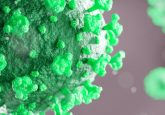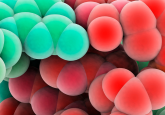The evolution of PCR: From q to dd and beyond
PCR has evolved rapidly over the last few years, an evolution that has been dramatically accelerated by the COVID-19 pandemic. New technologies and approaches have been brought to the fore and the full range of applications for which this technique can be applied have been highlighted, from diagnostics to basic disease research and immunology.
This episode explores this evolution, looking at how challenges presented by the pandemic forced the hand of researchers to think outside the box and build on lesser-known PCR technologies. Here, Eddy van Collenburg, Market Development Specialist at Bio-Rad (CA, USA), provides his insight into how ddPCR rose to prevalence during this time and explains how the technology is being used to enable trade, detect new variants and is being used outside of the pandemic.
Discover the key role that ddPCR can play in gene therapy research, liquid biopsies, cancer research, single-cell studies and more, in this fascinating overview of the development of PCR and where the technique can go in the future.
Contents:
- Introduction: 00:00-01:30
- Why was qPCR established as the gold standard for detection? 01:30-03:40
- Limitations of qPCR during the pandemic: 03:40-05:05
- New varieties of PCR for faster results: 05:05-05:40
- New varieties for more accurate results: 05:40-06:45
- ddPCR working principle and advantages: 06:45-09:00
- Nonclinical ddPCR applications for COVID-19: 09:00-10:45
- ddPCR in variant detection: 10:45-12:05
- ddPCR in gene therapy research: 11:05-12:30
- Liquid biopsy and cancer research: 12:30-15:20
- Combining ddPCR with NGS in research: 15:20-16:15
- What are some of the applications of ddPCR that you find most exciting? 16:15-17:10
- Applications of ddPCR in single-cell studies: 17:10-21:00
- Improvements in ddPCR: 21:00-21:45
- Tips for best practice when using ddPCR: 21:45-22:50
- What would you ask for to improve ddPCR? 21:50-24:20





